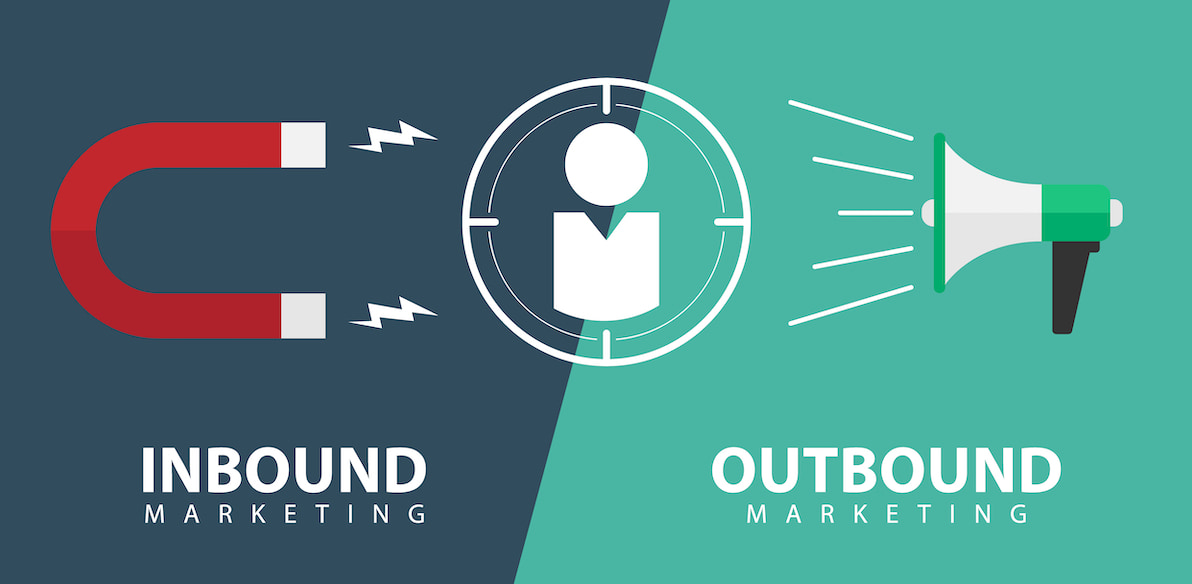Inbound Marketing is a marketing strategy based on non-invasive content techniques used to attract potential clients and lead them naturally through each stage of the sales funnel until they finally make the purchase.
Have you ever had the annoying sensation that you were being nagged into buying something you didn’t even need or had any interest in? You surely have; that’s the traditional marketing we’re all (mistakenly) used to. Well, Inbound is the sort of marketing which instead of disrupting you or making you feel uneasy, persuades you to learn about the brand or product voluntarily.
It’s not about “hidden advertising”. The fundamental premise of inbound marketing is “offering before getting”. On the whole, it’s a comprehensive process which in the first place finds out who the ideal buyer is, how and when they need what they need –in order to create content that perfectly fits their needs, and finally to distribute it in the strategic channels where those prospects are.
Related: What is Content marketing?
What is Inbound Marketing for?
Basically, its purpose is just the same as any other commercial strategy, though its results are far better. To put it simply, an inbound strategy allows you to:
- To have a solid presence in the digital market.
- To attract potential clients to your site and create a database of qualified leads.
- To orient the purchase process of your prospects.
- To connect on a customized level with your clients and build loyalty to your brand.
- To collect relevant data and keep optimizing your sales strategy.
How does Inbound Marketing work?
First, it’s a strategy mainly concentrated in digital media –the Internet, social networks, emailing and even mobile apps.
The Inbound mechanism starts the very moment that a user first makes a search on the internet to get the solution to a problem, concern or need. If you happen to have a product or service that might help them, you have to find the way to make the user reach you “on their own”.
See the following example:
Let’s imagine you’re planning your end of the year vacation and you haven’t quite decided yet where you want to go, but you do know you want something original. You Google up “Cities to Celebrate New Year’s Eve” and the first hit you come with is this article from Skyscanner, a travel agency.
In that article you’re not being sold anything at all. You can read it through smoothly, thankful that someone has gone to the trouble of collecting and explaining ten different interesting alternatives for you. Say, for instance, you find Chicago attractive. The subtitle of that choice is a big link you click on to get more information, and then you land straight on a landing page that provides further interesting data about that country and enables you to find out how much the air tickets to Hungary on those dates are.
Maybe Chicago wasn’t good enough for you. So you go back to check the other destinations and you notice that at the end of the article there’s a link to this other content talking about six “weird” new-year celebrations around the world. Just what you’ve been looking for! Sao Pablo seems to be a good destination, with wonderful parties and away from cold. So you click on the subtitle again, and you get to another site where they literally solve any doubt you may have about how to find inexpensive flights, which places you should visit, whether you need a Visa or not… etc. There you have everything you’re looking for, you don’t need to go find the information in any other site (or agency).
You can also find flights there too. A notification promises to send special deals straight to your mailbox if you leave your contact details. Is there anything to lose? So you leave your contact details and keep searching for other options. On the following day you get an email with a “super special deal” 20% off on accommodation in Chicago. With that discount you can afford your trip with your original budget. You pay for the hotel and buy your air tickets right there; all along with no feeling of pressure from the agency at any moment.
That is Inbound Marketing.
Which are the pillars of inbound marketing?
The processes involved in Inbound marketing are many and evolve daily, sometimes even experts don’t agree on their classification, but the basic process is still the same:
Attracting – Interacting – Delighting
In the previous example, Skyscanner attracted you with the content you needed, interacted with you showing costs and collecting your personal information, and delighted you with a compelling offer.
Who is in charge of Inbound Marketing?
A comprehensive inbound strategy involves different parties. To begin with, a digital marketing specialist will be on top of general stuff, such as identifying the Buyer persona, the Buyer’s journey, and building the sales funnel.
A SEO analyst will research and define the key terms and most important opportunities for an organic positioning (e.g. “10 Destinations to celebrate the New Year“). On the other hand, article writers and graphic designers will create and give format to the content.
A Sales Rep may well be in charge of assisting personally those leads who are ready to buy, increasing the conversion rate. Finally, it’ll be necessary to run an analysis to the campaign-collected information in order to obtain valuable conclusions about users’ behavior, so that the following Inbound campaign is still more effective.
What is Workana?
We invite you to know Workana, the leading freelance marketplace. We’ve been working since 2012 to keep connecting companies and entrepreneurs with remote workers of the most diverse specialty areas.




